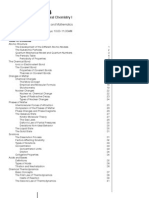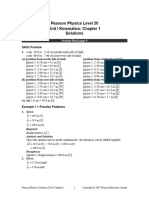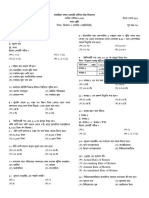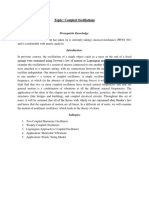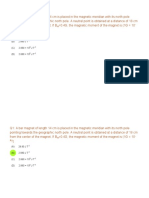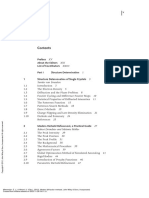Structure of Atom - Expanded Pointwise Notes
J.J. Thomson’s Atomic Model (Plum Pudding Model)
- Atom is a positively charged sphere with electrons embedded like plums in a pudding.
- Explains overall neutrality of atom.
- Drawbacks: Could not explain scattering experiment, atomic stability, or spectra of atoms.
Rutherford’s Nuclear Model
- Atom has a small, dense, positively charged nucleus at the center.
- Electrons revolve around nucleus in circular orbits.
- Most of the atom is empty space.
- Drawbacks: Failed to explain stability of atom, could not explain atomic spectra.
Bohr’s Atomic Model
- Electrons revolve in fixed orbits (energy levels) without radiating energy.
- Angular momentum is quantized: mvr = nh/2π.
- Energy absorbed/emitted when electron jumps between orbits: ∆E = hν.
- Success: Explained hydrogen spectra (Lyman, Balmer, Paschen series).
- Drawbacks: Failed for multi-electron atoms, Zeeman effect, Stark effect, uncertainty principle.
Black Body Radiation
- A black body absorbs all incident radiation and emits radiation depending on temperature.
- Classical theory predicted ultraviolet catastrophe (infinite energy at short wavelengths).
- Planck explained it using quantum theory: energy emitted in quanta E = hν.
- Importance: Led to development of quantum mechanics.
Photoelectric Effect
- Emission of electrons from a metal surface when light of suitable frequency falls on it.
- Key observations:
- - No electrons emitted below threshold frequency.
- - Number of electrons ∝ light intensity.
- - Kinetic energy ∝ frequency, not intensity.
- Einstein’s equation: hν = W + 1/2 mv^2.
- Importance: Proved particle nature of light (photons).
Quantum Numbers
- Principal (n): shell, energy level; capacity 2n^2.
- Azimuthal (l): subshell/shape (s,p,d,f).
- Magnetic (ml): orientation of orbital (-l to +l).
- Spin (ms): +1/2 or -1/2.
- Example: 2p electron → n=2, l=1, ml=-1,0,+1, ms=±1/2.
Aufbau Principle
- Electrons fill orbitals in order of increasing energy.
- Order: 1s → 2s → 2p → 3s → 3p → 4s → 3d → 4p ...
- Rule: Increasing n+l; if equal, lower n fills first.
�Pauli Exclusion Principle
- No two electrons can have the same 4 quantum numbers.
- An orbital can hold maximum 2 electrons with opposite spins.
Hund’s Rule
- Electrons occupy degenerate orbitals singly first, with parallel spins.
- This minimizes repulsion and increases stability.
- Example: 2p2 → ↑ ↑ 0.
Electronic Configurations (Caret Notation)
- Na (Z=11): 1s2 2s2 2p6 3s1 → [Ne]3s1
- Cl (Z=17): 1s2 2s2 2p6 3s2 3p5 → [Ne]3s2 3p5
- Fe (Z=26): 1s2 2s2 2p6 3s2 3p6 4s2 3d6 → [Ar]4s2 3d6
Atomic Number and Mass Number
- Atomic number (Z): Number of protons in nucleus (also electrons in neutral atom).
- Mass number (A): Total number of protons + neutrons in nucleus.
- Example: Carbon-12 → Z=6, A=12.
Isotopes, Isobars
- Isotopes: Same Z, different A (same element, different neutrons). Example: 1H1, 1H2, 1H3.
- Isobars: Different elements, same mass number A. Example: 18Ar40 and 20Ca40.









































